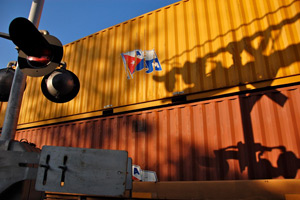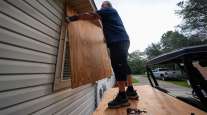Freight Rail Seen as Key to Transportation in Florida County

Increased freight rail traffic parallel to Interstate 75 and into Polk County, Florida, should be encouraged in the coming decades to keep the state's north-south transportation network functioning, according to a recent Florida Department of Transportation report.
As a peninsula and the third-most populous state, Florida presents some difficult transportation challenges — there's only so many ways to get in, out and through, and as capacity expands on those corridors, so do the effects on the communities they run through.
RELATED: Proposed Florida freight zone gets thumbs-up from county planning organization
"The I-75 Relief Task Force report recognizes that moving freight off of highways and onto rail can significantly reduce traffic congestion, as one train can carry the load of 280 trucks," CSX Corp. spokeswoman Kristin Seay said.
The rail company is doing its part, she added, by completing a series of expansion projects along its S-Line, which runs mostly parallel to I-75, at a cost of more than $200 million, and building its intermodal terminal in Winter Haven.
Good for I-75, but this kind of news gets mixed opinions from municipal officials and business interests: Though rail was a major determining factor on which cities flourished or floundered, now trains through central business districts are often considered nuisances.
"That's been one of our main points on rail planning in Florida — you only have so many routes," Lakeland Transportation Planner Chuck Barmby said. "There certainly needs to be a focus on how do we improve our rail infrastructure in a way we don't impact our communities."
That was a focus of a 2014 FDOT report on rail through Polk County that outlined three potential new routes for freight through Polk and set the stage for such smaller-scale improvements as "quiet zones" where trains are not required to sound their horns at road intersections.
But the big-ticket items in the Polk Rail study, with development times in the decades and a cost of about $1 billion, have remained untouched.
The alternative pathways were presented as a way to increase capacity, freight or otherwise, but it could allow the existing lines through Lakeland to set aside more capacity for passenger rail if the freight had a different route.
"Maybe there's a way here we can stitch together the I-75 work with the Polk Rail work," Barmby said.
"How do we build this network so our central core cities can continue to grow and develop?" he asked. "It's a good opportunity to restart the discussion about what some of the potential rail investments are, understanding it's probably a 30-year process."
The FDOT "I-75 Relief" study is a broad assessment of future goals for the state and doesn't call for specific projects, nor does it connect observations with existing funding sources, but rather it outlines potential problems and potential solutions.
The study focused on the area mainly from Gainesville to Tampa. As well as increasing freight rail capacity, the study also suggests beefing up roads parallel to I-75, particularly U.S. 301 and U.S. 41, creating truck lanes on highways and encouraging passenger rail and intercity busing.
"It's not going to be a quick fix anywhere," FDOT District 1 spokesman Robin Stublen said, but the state and municipalities are making progress. Big changes will require cities, counties and the state to work together.




